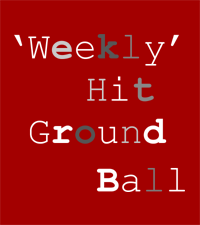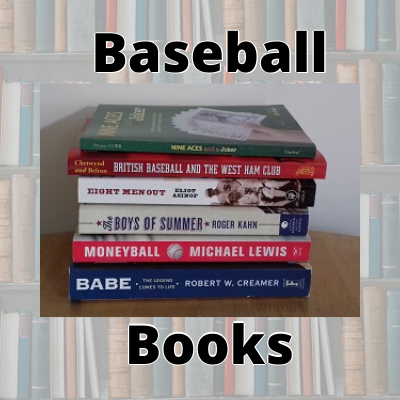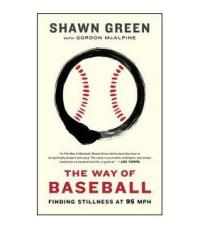 When does winter come to an end and spring begin?
When does winter come to an end and spring begin?
According to the Met Office, in the UK it depends on whether you’re looking at the meteorological or astronomical season. If the former, the first day of spring this year is 1 March, the latter is 20 March.
What the Met Office don’t take into account in that article is a third season you might be going by.
The baseball season.
This year, spring starts on 23 February. Whilst a few teams are playing on Wednesday and Thursday, the proper spring leagues (Cactus in Arizona, Grapefruit in Florida) get going with games on Friday.
It’s the same every year: we’re all happy to have MLB baseball back as spring games begin, then go into a bit of a lull as the lazy Spring Training-ness of the games loses some of its appeal, before the regular season starts coming into view and the excitement builds again.
Even if you don’t care for Spring Training games all that much, you can at least enjoy them as the next marker that shows the real action is getting ever closer.
Baseball Prospectus 2018 Annual arrives
The start of Spring Training isn’t the only baseball season marker for me this week. After Truck Day and MLB.TV Day, the next unofficial Day in my baseball calendar is the day on which there’s a knock on the door and the postie hands over a chunky parcel of joy.
That happened yesterday as my copy of the Baseball Prospectus 2018 annual arrived. I’ve been buying it every year since 2005 and whilst the quality has varied at times – never being worse than ‘good’, but not always hitting the heights hoped for – I can’t imagine being without it.
It’s a book you can dip into all season long, but it particularly comes into its own during Spring Training when there are prospects and fringe players to look up and learn more about.
Those other markets
In this column two weeks ago, my final thought was about the potential impact that a more prosperous baseball landscape outside of North America could have on free agents (at the lower levels, rather than the top stars).
This year’s BP Annual looks beyond North America by adding a couple of chapters about the Korea Baseball League and Nippon Baseball League in Japan. There’s an opening essay about each league set-up followed by stats and commentary on the main players in each league (the Japan league version also includes stats on lots – all regulars? – of other players too).
They make for an interesting and welcome addition to the book, adding something a bit different that you might not think to go and look at on the internet otherwise.
The first name included in the Korean Baseball League list is Roger Bernadina, better-known for his time with the Washington Nationals in MLB or – for British fans – being the star man for the Netherlands in the 2007 European Championships final against Great Britain.
Another name that caught my eye was that of Michael Choice. I wrote last week about some of the A’s prospects that had got away. Choice was drafted in the first round by the A’s in 2010 and rose to being the team’s top prospect, making the Majors in September 2013 before being traded to the Texas Rangers a few months later.
Things never quite panned out for Choice in the Majors and after bouncing around the Minors for a few years he decided to take up the offer of joining the Nexon Heroes in the KBO League last July. The commentary on him in BP18 notes that he hit three home runs in his final game of the 2017 season and agreed a $600k deal to stay with the team for 2018.
New for 2018
Much of the rest of the formula stays the same, although there’s a new addition to the pitcher profiles in the form of three new ‘Top-Line Pitching’ metrics. These are designed to give an insight not strictly on performance but the type of pitcher they are, “how a pitcher gets to their results” is how they describe it.
The metrics look at Power, Stamina and Command and give a score for each based on a 0-100 scale. First impressions are that they do offer something different and could be a useful ‘quick glance’ profile of a pitcher, although it would have been nice if they had spent a bit more time putting them into context in the Statistical Introduction by going through some examples of different types of pitchers.
The other addition is the presence of some specially designed Topps category leader cards that decorate the end of a team’s section if they have any leaders on their team from 2017. Fourteen teams draw a blank and some aren’t your obvious leaders. Baltimore’s sole leader card is of Caleb Joseph for his league-leading 2.9 Blocking Runs mark, which is nice for him and his family.
Don’t save the best ’till last, put it first
If this off-season’s player free agent market seems strange, that’s nothing compared to Jayson Stark becoming a free agent at the end of April last year in the latest round of cost-cutting by ESPN. Picking a favourite baseball writer is like picking a favourite band, you love the ones you love for different reasons and choosing between them is impossible, but Stark is one of the first names that would come into my head.
Stark provides the traditional guest foreword to this year’s BP annual and it’s a typically thoughtful and entertaining read.
And the great thing is, that’s not where Stark’s baseball writing in 2018 comes to an end.
The Athletic keeps on growing
Ken Rosenthal broke the news this week that Stark has been signed up to join The Athletic’s expanded MLB team from 1st April.
The Athletic is a fairly new venture with a simple mandate: providing quality sports writing at a price. In some respects this runs counter to prevalent trends, with media companies moving towards video and audio and the long-held expectation of many that online content will be available for free.
The fact that it runs counter to these trends is the whole point. The belief is there’s a sizeable audience that still values writing and are prepared to pay a reasonable cost for it. I count myself among that number, signed up in early January and I’ve been impressed so far.
It seems like every week or so another baseball writer confirms they are joining the website’s staff. Whilst the quality of the articles published is generally high and provides good variety, you can tell it’s still in a formative period somewhat and building up to cover the entire circuit (20 of the 30 MLB teams have dedicated writers, alongside the national writers such as Rosenthal, Stark, Peter Gammons and Jim Bowden). I probably feel that a little more than most subscribers as I don’t follow any of the other North American sports so I don’t get the benefit of all of the other content they are putting out.
Still, the national MLB writing is already strong (and will be even better with Stark on board), the Oakland A’s are covered well by new beat writer Julian McWilliams and Melissa Lockard and I’m enjoying dipping into the local coverage of other teams to pick up the early news from Spring Training camps. I definitely recommend taking a look.
Thanks, Matt. Hope you enjoy.
— Ken Rosenthal (@Ken_Rosenthal) February 13, 2018








 There is no getting away from the fact that most people in Britain share a hard-headed view of baseball. They see it as a game played solely by Americans and of little relevance to the UK’s sporting past or present, aside from the idea that ‘we invented it and called it rounders’.
There is no getting away from the fact that most people in Britain share a hard-headed view of baseball. They see it as a game played solely by Americans and of little relevance to the UK’s sporting past or present, aside from the idea that ‘we invented it and called it rounders’.